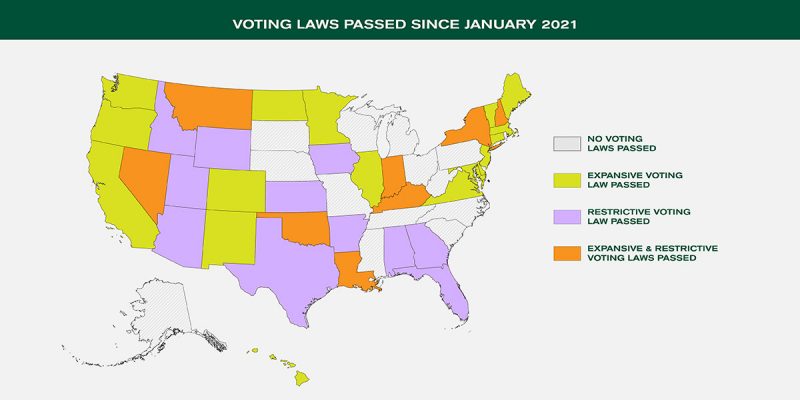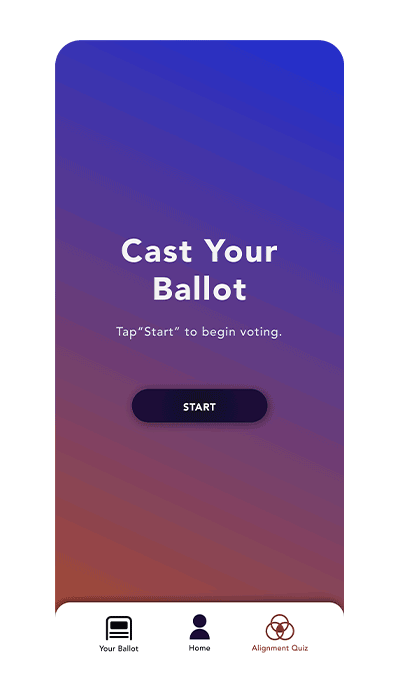Systemic Cracks and a Possible Future
Posted on November 23, 2021“They gave us the wrong room. I’ll go back down and talk to them,” my mom said as I scrambled for the TV remote. My mom, her friend, Rebecca, and I had just checked into our hotel in Delhi when I turned on the news. It was November 9th, around 3 PM. Rebecca and I sat on the edge of the beds as I flipped to find the first English-speaking news channel. “Yes, the BBC! They’ll have it,” I thought. As soon as I landed on the channel, I lost all color.
“DONALD TRUMP ELECTED 45TH PRESIDENT OF THE UNITED STATES,” The announcement rolled across the bottom of the live coverage, suspended in a cherry red rectangle.
“What the f***! Are you kidding me!” Rebecca bellowed. The door opened and my mom gleefully announced we had a new room that was ready for our arrival.
“Jules, don’t look at the TV,” Rebecca said. Cue my mom looking right at the TV. I don’t remember what she said. I sat there, wide-eyed and suspended in grief. I broke down when I listened to Hillary Clinton’s concession speech, the confirmation that my fear was reality. I was heartbroken, but not surprised. I don’t think I’ll ever be able to watch that speech without crying.
In the four years of the Trump presidency, I often thought, “How would Clinton have handled this?” Or “This would have never happened if HRC was president.” I thought about how the electoral college failed America for the third time. After reading Forensic Architecture, I started to see a similarity between the Rana Plaza Factory collapse and systemic failure of the electoral college. At Rana Plaza, surveyors pointed out numerous structural cracks and recommended the factory’s closure. Off-site management ordered work to continue and “At 9:00 a.m., an hour after the start of work, the cracks expanded, cut through the building, and brought it down. More than 1,127 workers, mostly women, died and a further 2,500 were injured.” (Weizman, 55). “A crack is merely the potential for something to occur. It might linger for years or expand suddenly and tear a building apart.” (Weizman, 53). The multiple failings of the electoral college were the deepening of systemic cracks. Cracks that I believe have been around since the inception, but with each failure, decompose the integrity of the system.
Trump identified the paths of least resistance, tearing through the fabric of democracy and unleashing a litany of mainstream disinformation and honestly, stupidity. His administration exacerbated systemic cracks. He made our shortcomings as a country abundantly apparent, ultimately culminating in the January 6th Insurrection.
The fear-mongering rhetoric became deeply rooted in conservative states. The effects of his presidency will ripple out for a long time. In 2021 legislative sessions, 19 states have passed more than 33 laws making it harder for Americans to vote (“Voting Laws Roundup October 2021”). Alternately, 25 states enacted 62 laws with provisions that expanded voting access. Despite nearly twice the amount of expansive voting access legislation passed, it does not balance the scale. Most of these bills were reinforcing, doubling down on the political archetype of a state.

Restrictive voting bills are a vaudevillian act. Rather than uplifting democracy and ensuring every eligible citizen has the opportunity to vote, these bills perpetuate the false narrative that voting is not safe. But, that’s how the system was designed. American democracy was built to benefit wealthy, land-owning, white men in this country. Any attempt to usurp the system about voting is met with hoops to jump through and barriers to entry. The top-down, white supremacist, patriarchal force in the United States is a relentless machine.
Okay. Off the soapbox.
 After the election, I speculated an app, called Appsentee. I longed for a system that made it easy to vote, so I designed one. The app does many things, helps you research your ballot, contact elected officials, and participate in daily polls, but the best part, in my opinion, is the ability to vote. Voter participation increases in states that use automatic mail-in ballot voting. Imagine voter participation if it was in the palm of your hand.
After the election, I speculated an app, called Appsentee. I longed for a system that made it easy to vote, so I designed one. The app does many things, helps you research your ballot, contact elected officials, and participate in daily polls, but the best part, in my opinion, is the ability to vote. Voter participation increases in states that use automatic mail-in ballot voting. Imagine voter participation if it was in the palm of your hand.
The barriers to voting from your phone aren’t one of technology, but one of policy and paradigm. If we can bank from our phones, why can’t we vote from our phones? In this parallel reality, legislation has been passed to include an app-based digital format. There are teams deployed to reach historically marginalized and excluded communities. Eligible voters are automatically registered to vote when they turn 18. Everyone gets a puppy!
Dunne & Raby talk about working in the possible futures cone. “In the scenarios we develop we believe, first, they should be scientifically possible, and second, there should be a path from where we are today to where we are in the scenario,” (Dunne & Raby, 4). I like to think this is where my intervention sits – in a possible future, perhaps even a preferable one.
To watch a talk about Appsentee, click here.
<3 AMP
Sources
Waldman, Michael, et al. “Voting Laws Roundup: October 2021.” Brennan Center for Justice, 22 July 2021, https://www.brennancenter.org/our-work/research-reports/voting-laws-roundup-october-2021.
Weizman, Eyal. Forensic architecture. Brooklyn: Zone Books, 2017.
Dunne, Anthony, and Fiona Raby. Speculative Everything: Design Fiction and Social Dreaming. Boston: MIT Press, 2013.